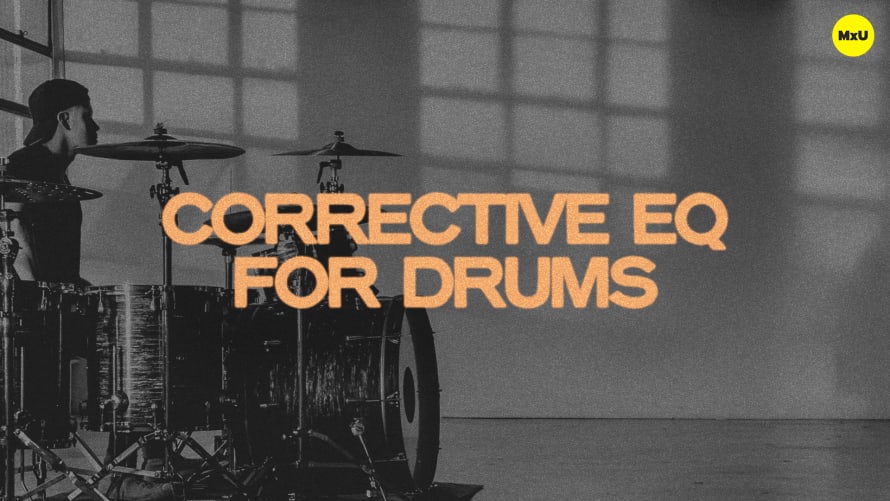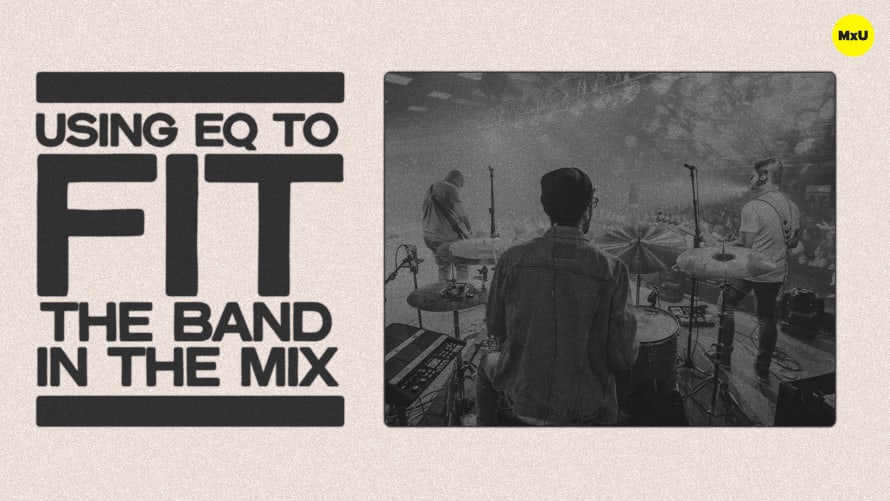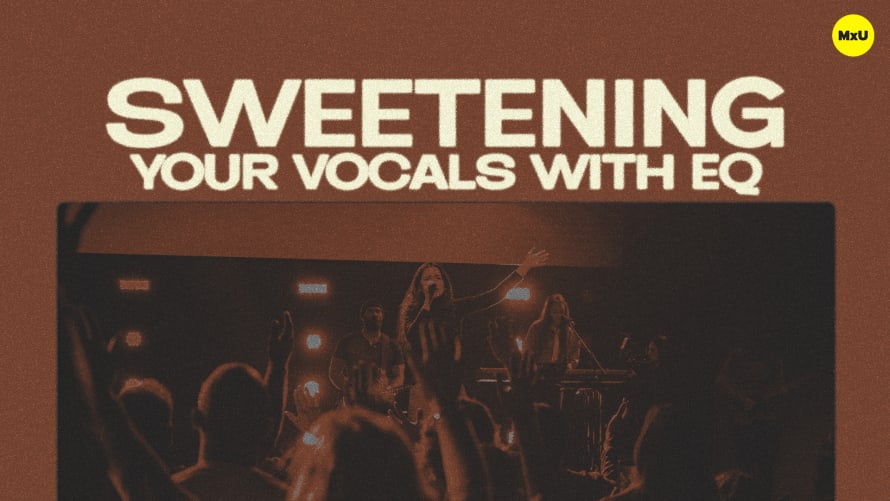Corrective EQ for Drums


Continue watching
Sign up to continue watching Corrective EQ for Drums
Pricing
Starting at $19.95 /mo
More in MxU
Trey Smith showcases how drum EQ sets the tone for the entire mix. Small tweaks lead to major results, and Trey shows just how important those small tweaks are.
Key Points:
- The foundation of a great mix begins with EQing the drums, starting from the kick and moving through snare, hi-hats, and toms.
- Your drum workflow should include routing your drums to a single drum group, then to a band group, and finally to the mix group. This setup emphasizes a clean and organized workflow.
- The drum kit that Trey is mixing in this video has a unique kick drum. The kick drum doesn’t include a kick hole so the only mic is on the outside. This uniqueness requires specific EQ, gating, and compression techniques.
- Don’t skip over your high pass and low pass filters. High pass filtering helps you clean up the low end, while low pass filtering focuses the drum sounds’ frequency range, overall improving the mix.
- Low-Mid frequencies can muddy your kick drum. Fix frequencies specifically in the 200-400Hz range for clarity and compatibility with other instruments in the band like the bass guitar.
- Snare Drum EQ is all about balancing the snare drum’s body and crack with EQ. Consider both the snare top and bottom mics for a full and vibrant snare sound.
- Use overhead mics for capturing cymbals. Add some life and space to the mix, and ensure that they add to the mix’s liveliness and depth.
- Once all drum parts have a good base EQ, some final tweaks will be necessary to make sure they all fit together. This gets the mix ready for other elements like compression and gating.









